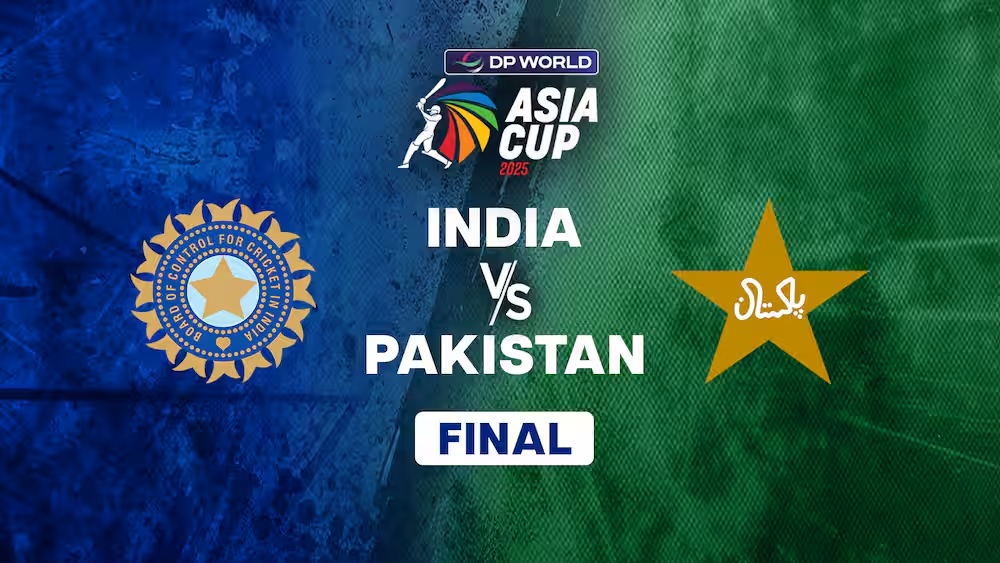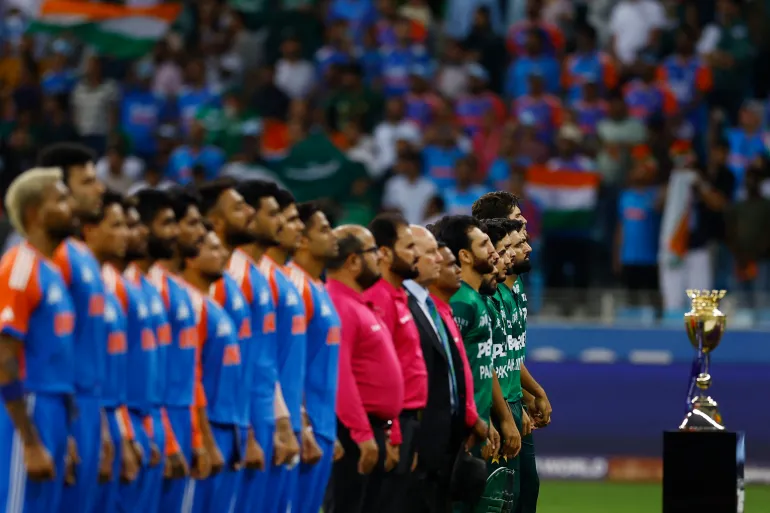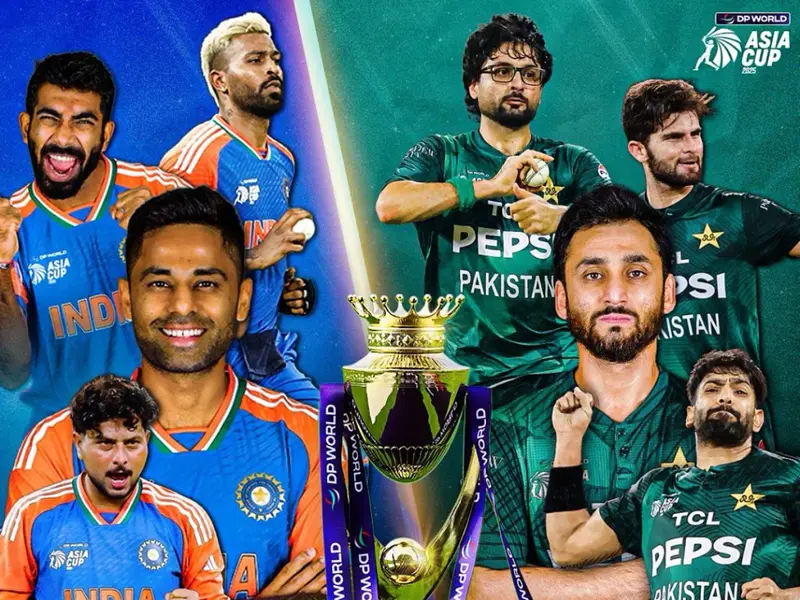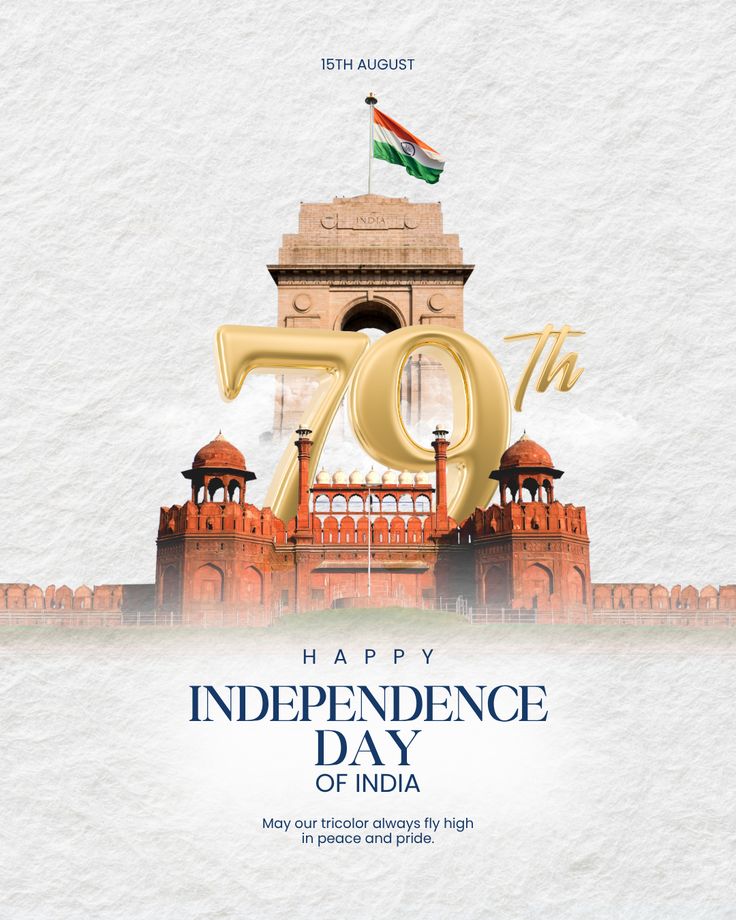The night of September 28, 2025 at the Dubai International Cricket Stadium was nothing short of historic. For the first time since the tournament’s inception in 1984, India and Pakistan — cricket’s fiercest rivals — locked horns in the Asia Cup final. The anticipation had been building for weeks, the emotions of millions stretched tight like a bowstring, and when the moment arrived, it delivered every ounce of drama, heartbreak, and glory that fans could have imagined.
In the end, it was India who triumphed, chasing down Pakistan’s modest target with grit and composure. The victory was not just another trophy for India; it was a statement of dominance, a clean sweep over Pakistan in this edition, and another jewel in their glittering cricket crown.
Setting the Stage: A Final That Cricket Needed
India vs Pakistan matches have always been events in themselves, transcending the sport and spilling into cultural, political, and emotional domains. Yet, until 2025, the Asia Cup had never witnessed these two nations face off in the final. That fact alone elevated the clash into a spectacle that fans had waited decades for.
Dubai, a neutral venue and a hub of South Asian diaspora, was the perfect backdrop. The stands were sold out weeks before the match. Ticket prices soared on resale markets, while millions tuned in across the world. Security was tightened in the city, with Dubai Police issuing strict guidelines: fines of up to ₹7 lakh and even jail terms were in place for unruly fan behavior. The stakes were massive, both on and off the pitch.
The Journey to the Grand Finale
India’s Unbeaten Run
- India came into the final with their confidence sky-high. Under the leadership of Suryakumar Yadav, the team displayed both flair and discipline.
- Abhishek Sharma, the young opener, was the tournament’s top scorer with over 300 runs, showcasing fearless hitting at the top.
- The middle order, anchored by Tilak Varma and Sanju Samson, was steady and reliable.
- The bowling unit — spearheaded by Jasprit Bumrah and Kuldeep Yadav — was clinical in dismantling oppositions.
India defeated Pakistan twice already in the group and Super Four stages, including a thumping win in the earlier rounds, which gave them a psychological edge heading into the final.
Pakistan’s Gritty Climb
Pakistan’s road was more turbulent. They lost to India twice but bounced back against Bangladesh to secure their spot in the final. Their strength lay in their opening duo: Sahibzada Farhan and Fakhar Zaman, who consistently gave brisk starts. The bowling, led by Shaheen Afridi and Haris Rauf, was dangerous but inconsistent.
For Pakistan, the final was a shot at redemption — a chance to overturn their losses and silence critics who doubted their ability to hold nerve in crunch moments.
The Toss and the Big Call
On the night of the final, Pakistan won the toss and chose to bat first. The decision seemed logical: put runs on the board in a high-pressure final and let the bowlers unleash under the lights. India, however, looked comfortable. They preferred chasing, especially given the dew factor that often tilts matches in Dubai.
Pakistan’s Innings: From Bright Start to Sudden Collapse
- The first 10 overs belonged to Pakistan.
- Sahibzada Farhan was aggressive, reaching a brilliant half-century (57 off 38 balls).
- Fakhar Zaman provided excellent support, striking a fluent 46.
- At 84 for no loss and later 113 for 1, Pakistan looked set for a competitive total of 170+.
Then came the turning point.
India’s spinners tightened the screws. Kuldeep Yadav, with his variations, ran through the middle order. In no time, Pakistan went from 113/1 to 146 all out in just 19.1 overs.
- Kuldeep’s figures of 4 for 30 were the dagger blow.
- Bumrah’s deadly yorkers cleaned up the tail.
- Axar Patel and Varun Chakaravarthy chipped in, ensuring there was no escape.
- The collapse — losing 9 wickets for just 33 runs — will haunt Pakistan for years.
India’s Chase: Rocky Start, Composed Finish
Chasing 147 in a final may sound straightforward, but pressure has its own script.
India’s top order stumbled:
- Suryakumar Yadav, the captain, fell cheaply.
- Shubman Gill couldn’t convert his start.
- By the end of the powerplay, India were tottering at 36/3.
For Pakistan, the dream of defending a low total flickered alive. Shaheen Afridi roared, Haris Rauf bowled with fire, and the crowd split in chants of “Jeetega Bhai Jeetega!” from both sides.
But then came the calm.
Tilak Varma and Sanju Samson stitched a crucial partnership. Tilak, elegant in his strokes, rotated the strike, while Samson punished loose deliveries. Their stand soaked up pressure, steadily eating into the target without panic.
Once they crossed the 100-run mark, the writing was on the wall. India eventually chased the target with balls to spare, sealing the win in style.
The Aftermath: India Reigns Supreme
India’s Clean Sweep
This victory wasn’t just about winning the final. It marked a hat-trick of wins over Pakistan in the same tournament — group stage, Super Four, and the final. Rarely has dominance in this rivalry been so absolute.
For India, the trophy reaffirmed their supremacy in Asian cricket. Their balance of youth and experience, batting depth, and versatile bowling attack stood tall throughout.
Pakistan’s Bitter Lessons
For Pakistan, the final was a story of “what ifs.” The openers gave them the perfect platform, but the middle and lower order imploded. Critics will argue about their lack of temperament, poor shot selection, and inability to read spin.
Former cricketers have already raised tough questions: Should Pakistan revamp their middle order? Do they need more spin-playing specialists? And most importantly, can they handle the mental pressure in India clashes?
Voices of the Game
Former Indian spinner Harbhajan Singh had predicted India’s win, citing their “all-round balance.” Meanwhile, ex-keeper Nayan Mongia had warned against complacency — advice that India seemed to take to heart after early jitters in the chase.
Pakistani legends expressed disappointment. “The collapse was unforgivable,” one ex-captain remarked, adding that the team must learn to absorb pressure rather than surrender to it.
Heroes of the Night
- Kuldeep Yadav (India) – 4/30, the man who broke Pakistan’s backbone.
- Tilak Varma (India) – His calm partnership during the chase proved invaluable.
- Sahibzada Farhan (Pakistan) – A fighting fifty that went in vain.
- The Atmosphere: A Night Etched in Memory
The stadium was a cauldron of sound. Every boundary was met with deafening roars, every wicket with stunned silence or ecstatic cheers. For fans, this wasn’t just a cricket match — it was a matter of pride, identity, and bragging rights.
Television footage captured emotional fans with tears, prayers, and celebrations. For those inside the stadium, the night will live forever in their memories.
Looking Ahead: Beyond Dubai
India now looks ahead to the Champions Trophy 2025 and the T20 World Cup 2026, brimming with confidence. The Asia Cup win not only cements their dominance but also sets a template for balancing youth and experience.
Pakistan, on the other hand, faces a period of introspection. The raw talent is there — from Farhan’s batting to Shaheen’s bowling — but converting potential into match-winning performances under pressure remains their Achilles’ heel.
Related News: Read More





